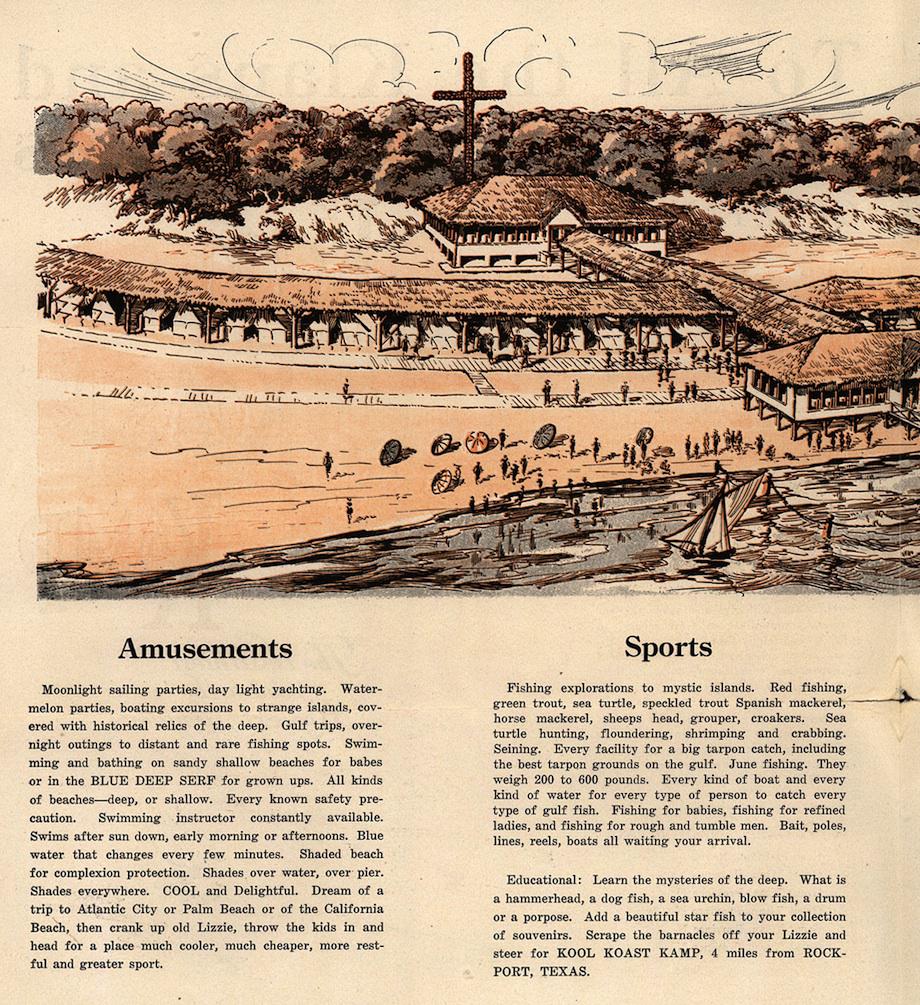The Vault is Slate’s new history blog. Like us on Facebook; follow us on Twitter @slatevault; find us on Tumblr. Find out more about what this space is all about here.
This brochure advertises a Ku Klux Klan summer resort to be convened in 1924 near Rockport, Texas. The pamphlet offers KKK members a roster of family activities, including swimming, “watermelon parties,” and “big game fishing.” The excursion would even be educational: Klan members might “learn … what is a hammerhead, a dog fish, a sea urchin, blow fish, a drum or a porpose [sic].”
The Ku Klux Klan calls to mind racism, violence, and vigilantism—a reputation richly deserved—but during the 1920s, the KKK also considered itself a social club dedicated to advancing community. The KKK saw its members as poorer and less advantaged than a corrupt mainstream elite. Alongside punitive, negative actions directed at minorities, the KKK encouraged charity—for the “right” kinds of people. So, for example, individual chapters participated in mutual aid, supporting members who had fallen on hard times and advancing one another’s local businesses.
The Kool Koast Kamp (the KKK scattered Ks with abandon) was meant to serve people who are “not [usually] privileged to enjoy an outing such as this will afford.” Such families might “dream of a trip to Atlantic City or Palm Beach,” but then “crank up old Lizzie, throw the kids in and head for [the Kamp],” which would be “much cooler, much cheaper, more restful and greater sport.”
The brochure manages to work threatened whiteness—and, in particular, threatened womanhood—into its language, without directly referencing race. In the brochure’s illustration, a giant cross looms over the “shaded beach for complexion protection.” “Wonderful Mothers” are assured that “The Fiery Cross guards you at nights,” while “Beautiful Daughters” are told: “The sentiment reflected through humanity by the rays of the Fiery Cross makes you as safe on our Kamp as at home in Mother’s Arms.”

